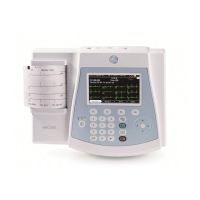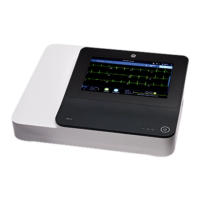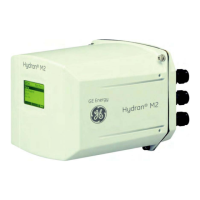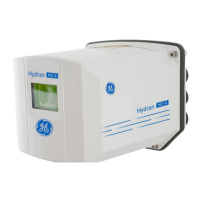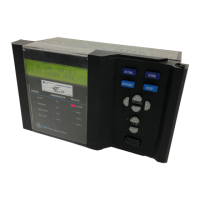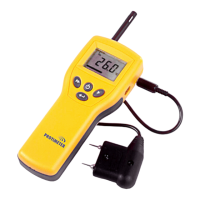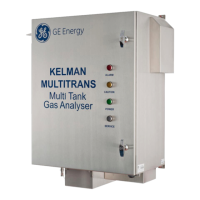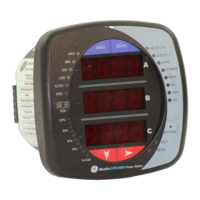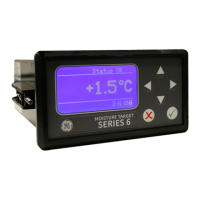4. Measuring Thickness
Page 130 DMS 2 Operating Manual
Step 1:
If necessary, activate the TG Primary Menu (TG
mode) by pressing
.
Step 2:
Activate the B-SCAN Submenu by selecting it with
or so that it’s highlighted. Five selections will appear
across the bottom of the display screen.
Step 3:
Press below the selection titled T-MIN. The
minimum thickness line can then be turned ON or OFF.
Step 4:
Turning the Minimum-Thickness graphic limit ON or
OFF will only display or remove the graphical “limit.” This action
will not otherwise effect the instrument’s alarm status.
Clearing the B-scan Display (B-SCAN–CLEAR)
The B-scan mode will allow you to map the thickness profile of
the material being tested over a period of time. This time
period may be set between 3.5 and 21 seconds. At the end of
the B-scan time period, the displayed B-scan will remain
displayed until it’s cleared with the CLEAR selection.
4.6 Saving, Recalling, Clearing TG Setups
(Parameter Sets)
The PARAM Submenu allows users to select, save and re-load
up to twenty thickness gage parameter sets with corresponding
A-scan images. When a parameter set is saved by selecting
SAVE P-SET, the settings of all of the parameters listed in
Table 4-1 are retained. This set of parameter settings (usually
associated with specific applications such as Tanks or Cooling
Tubes) can be applied to a data file by selecting LOAD P-SET.
When an existing P-SET is loaded or applied to a new data file,
the current instrument settings are automatically replaced by
the stored settings and the stored A-scan image is displayed.
These settings can then be adjusted as required.
The saved
P-SET can’t be changed
. If you wish to modify an existing
P-SET, first make the changes, delete the existing P-SET, as
described below, and save the new parameter settings using
the same P-SET name.
This feature provides the following two major benefits:
1. Storing and recalling TG calibration setups saves time,
ensures consistent data, and minimizes calibration errors.
Transferring setups to and from a computer also saves
time and allows identical setups to be stored in multiple
instruments.

